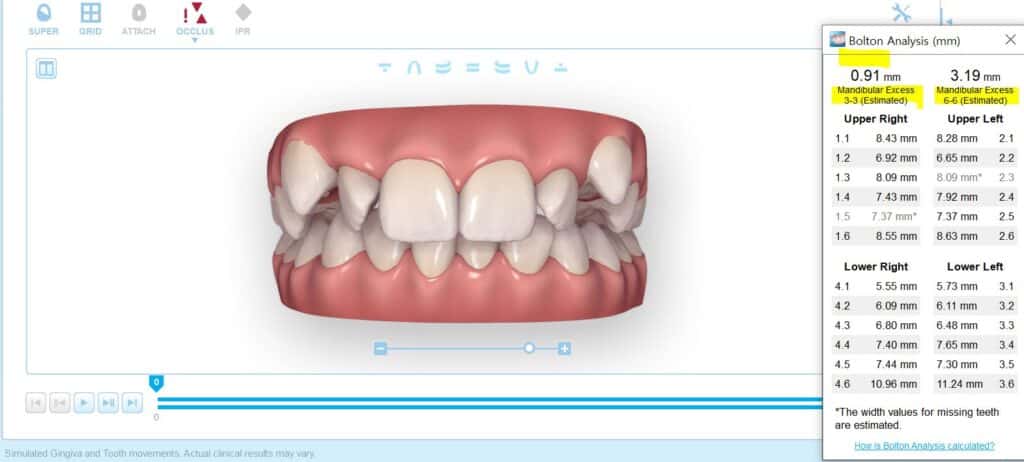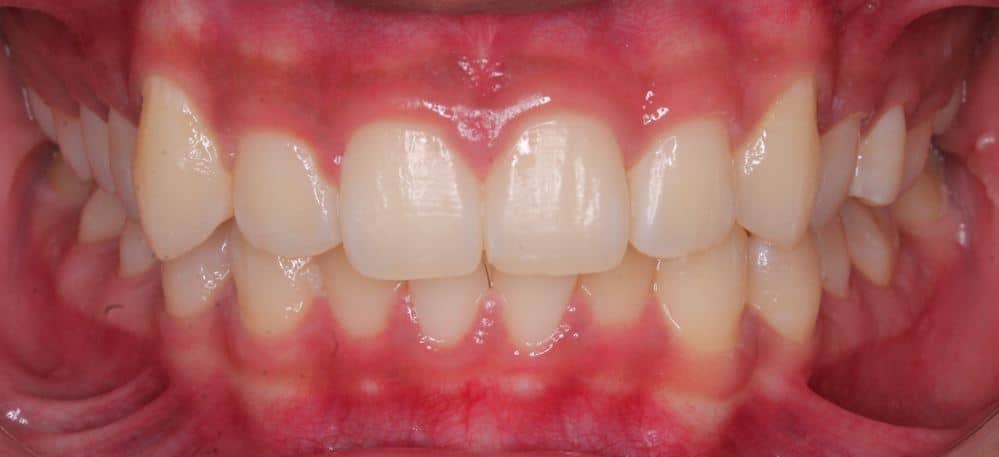Anterior ratio: 77%
(sum of MD width of lower 6 anteriors/ sum of MD width of upper anteriors)
Overall ratio: 91%
(sum of MD width of lower 12 teeth/ sum of MD width of upper teeth)
How often do you see patients with peg lateralis? In those patients, proportion of upper 6 anterior teeth gets narrower when compared to lower 6 anterior teeth (Not actual sum!).
Dr. Bolton evaluated over 50 Caucasian subjects in excellent occlusion. He found the proportion between the sum of upper anteriors and the sum of lower incisors is important.
To use Bolton’s analysis in clinics, we need actual mm not the ratio. We don’t want to know whether lower 6 anteriors are 77% of upper 6 anteriors. We need to know that lower anteriors are 2 mm wider than it supposed to be.
You can calculate this actual mm by yourself but it takes time. Nowadays, many software measures tooth size and calculates Bolton analysis automatically.
If you use iTero scanner, you can find it out with Cleancheck software even though it is not Invisalign case. You don’t have to upload patient’s scan to the Invisalign site.

Key points
1. Tooth set-up gives you more precise information about tooth size discrepancy than Bolton’s analysis.
2. However, Bolton discrepancy gives us ballpark figure. It tells how many millimeters upper anterior teeth are bigger than lower anteriors.
Just save patient’s scan into adf file using Invisalign outcome simulator. And then, open the file with CleanCheck.
Bolton WA. Disharmony in tooth size and its relation to the analysis and treatment of malocclusion. The Angle Orthodontist. 1958 Jul;28(3):113-30.
